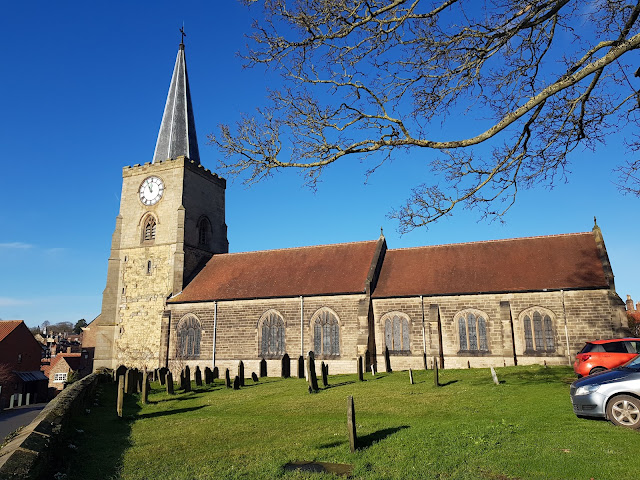The remains of Pickering Castle are well preserved because it was not seriously damaged in either the Wars of the Roses or the Civil War. The site is large and consist mainly of its defensive wall but this gives a good impression of its original size. A wooden structure was built on this site following the Harrying of the North in the 1180s and the stone castle replaced it in around 1220-1240.
When we arrived in Malton we were surprised to see the parish church, St Michael's, is in the middle of the market square. Dating from 1150, the church has undergone several waves of restoration, especially during the 19th century.
Malton is unusual, having had two 'main' churches. Nearby St Leonard and St Mary's, also dating from 1150, remains Roman Catholic and is believed to be the oldest Catholic church in the country. It was also the first church to be returned to Catholic use after the Reformation.
Next morning, after a good breakfast, we started our return journey, stopping at nearby Kirkham Abbey. Founded in the 1120s, the unusual Gothic Medieval Gatehouse was built in the 1290s. It was surrendered in 1539 during the Dissolution.
Our final stop before starting our return journey across the Pennines was Mount Grace Priory which sits peacefully on the banks of the River Derwent. The priory was established in 1398 by the Carthusian Order - making this known as a Charterhouse - and was suppressed in 1539, giving it a life of barely 140 years.
Parts of the ruins are remarkably well preserved and the church's tower remains almost perfectly intact, something which we have never seen in other ruins.
In about 1900, stones from the ruin were used to build an impressive Manor House, recognised as a fine example of the Arts and Crafts style.
On our way back across the A66 we stopped off at one of our favourite farm shops and were suprised to see, sharing a field with some local sheep, a number of Bactrian camels. North Yorkshire is a long way from home - the Hindu Kush - but the climate is not too different. They seemed happy enough on this sunny day.































